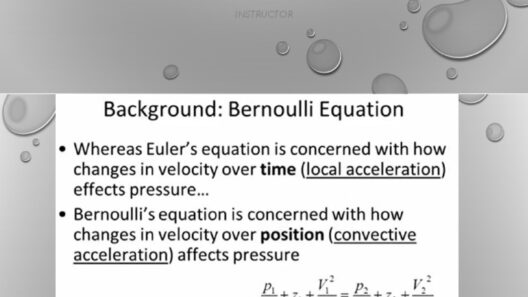Sliding down a pole may seem like a trivial act, often associated with children’s adventures or the heroic descents of firefighters. However, beneath this playful image lies an intriguing exploration of energy dynamics, physics, and human behavior. The act provokes questions about energy conservation, efficiency, and the playful perspective on the everyday phenomenons we often overlook. This article seeks to unravel these layers and present a comprehensive view of the energetic transaction that occurs during this simple act.
At its core, the motion of sliding down a pole can be examined through the prism of physics, addressing fundamental concepts such as potential energy, kinetic energy, and friction. When an individual climbs to a height, they accumulate potential energy, defined as the energy possessed by an object due to its position relative to others. As the person descends the pole, this stored potential energy is converted into kinetic energy, which is the energy of motion. The greater the height from which one slides, the more pronounced this transformation becomes.
The energy conversion process functions in a relatively straightforward manner; an increase in speed correlates with a decrease in potential energy. However, the presence of friction introduces additional complexities into our energy assessment. Friction, a force that opposes motion, plays a crucial role in determining how much energy is conserved during the sliding process. Different materials—whether it be smooth metal, rough wood, or slick plastic—will evoke varying levels of friction. Therefore, the type of pole one slides down can significantly impact the overall energy exchange.
Additionally, exploring this pole sliding phenomenon within the context of energy conservation raises salient questions about the mathematical principles governing motion. Conservation of energy states that energy cannot be created or destroyed; it can only be transformed from one form to another. Therefore, when sliding down the pole, the potential energy does not vanish; it transfigures into kinetic energy and, subsequently, into thermal energy due to friction. The energy initially present is conserved, but the efficiency of utilization varies considerably based on the variables at play.
Moreover, let’s delve deeper into the playful nature associated with sliding down poles, particularly in contexts such as fire stations. The imagery conjured by a child sliding down a fire pole remains an emblematic symbol of adventure and aspiration. In broader societal terms, this recreational act may engender a fascination with emergency services, encouraging a sense of community safety and connection. However, it also invites a critical eye toward energy consumption in leisure activities.
In modern society, the relentless pursuit of convenience often translates into energy expenditures that are overlooked. While one might argue that sliding down a pole is an energy-efficient activity—given the short duration and limited need for external energy input—one must also contemplate the broader ecological ramifications. What does it mean to engage in energy conservation practices on a daily basis? Is sliding down a pole a reflection of playful inadvertence, or does it symbolize a larger failure to acknowledge energy conservation in our daily lives?
Another dimension worth exploring is the psychological aspects of energy conservation in playful acts. Engaging in activities that seemingly conserve energy can drastically alter one’s mindset towards sustainability. This isn’t confined to children alone; adults are similarly susceptible to the charms of playful interaction, which can lead to greater awareness of energy issues. For instance, a child sliding down a pole might grow to appreciate the importance of energy efficiency as they become more conscious of their surroundings.
Notably, one must acknowledge the role of technology in the energizing process of such seemingly benign activities. The advent of smart technology—lighting that knows when to dim, appliances that minimize energy use when they sense inactivity—mirrors the playful enhancements one might find in the process of sliding down a pole. This technological shift has the potential to inspire new methods of enjoying recreational activities while minimizing energy usage, thereby fostering a culture that values sustainability.
But one cannot forget that the nuances of energy conservation extend beyond mere behavior modification. Supervisors in fire stations, for instance, have recognized the importance of energy efficiency within their facilities in more ways than just pole sliding. These institutions routinely invest in systems to reduce energy use, from installing solar panels to utilizing energy-efficient machinery. These prudent practices set an example that transcends the whimsical act of sliding down a pole, thus converting it into a symbol of awareness and responsibility.
In conclusion, the act of sliding down a pole—while seemingly trivial—invites a rich tapestry of exploration into energy dynamics, societal values, and the playful interactions that characterize human behavior. By understanding the physics involved, the implications of friction, and the psychological elements that accompany leisure behaviors, we uncover an array of topics ripe for introspection. As we shift our perspectives towards energy conservation, integrating playful acts with mindful behavior fosters an environment ripe for exploration and understanding. Hence, the next time one witnesses a child, or indeed anyone, sliding down a pole, it may be prudent to reflect on not merely the whimsical act but the profound implications it holds in the broader narrative of energy conservation. The interplay of playfulness and responsibility encourages us all to ponder how we engage with, and ultimately conserve, the energy that sustains our lives.







